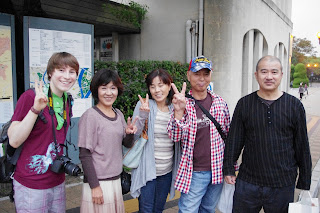As I've been in Japan since January, I've gradually had changes to view and changes to those changes as well. Starting from the moment that all the Japan was to me was ninjas and samurai (even though I knew this wasn't true, but it was all that I had received from pop culture). Furthermore, the blogs that have been made for this class up to this point has allowed me to view topics fixed by our teacher and those that we freely decided upon. This has also strengthen or weaken the views we might have towards the world as a general or Japan specifically as well.
 |
| Stop and Think about Experiences |
Seeing movies like Tokyology, for example, reminded me the ignorance and I carried and still carry today of a country that has much more to it. Even though the video presented some interesting topics, the approach was incorrectly done. Not only is this applicable to an area like Tokyo, which I haven't visited in these 11 months, but also in the local area that I've been staying for most of my time in Japan. Doing the blog about our neighborhood in Japan (mine being Hirakata), I used information I had already know and then made process thought about what I knew about Hirakata. Should it also be weird to find out that things that I thought the Japanese took for granted aren't? Food that was readily available in the cafeteria and the writing system which they follow, are not as obviously known or enforced as I thought. While I still ask people from time to time if they know what Curry Soba is, I'm still surprised when they don't know what it is when the Curry Soba is under the Curry Udon in the menu. Kanji is also something that's not as equal throughout every Japanese students. Just as some people have a bigger vocabulary basis in the U.S., the Japanese students tend to be very widespread with Kanji. I was surprised by how different the scores on the tests where. This reminds me that the game I used is a simulation for a Kanji test that Japan does as well (saw the poster for the test in front of the bookstore). Lastly, One of the most important things was finding about Zainichi terminology and feelings. Doing the post on my friend, who associates his pride with Korea but his life as Japan, gave me a similar feeling to the way I felt about the U.S. and Venezuela. I feel part of both in someway and part of one in other ways. In the end many dissimilarities and similarities raised from this topic.
 |
| Get your own Answer |
Japan is now different in my eyes and, interestingly enough, I had not thought about how my views change until I made this blog. These blogs, I believe, help us process information we already know as well as find some new information as well.




